McKinsey’s Solve assessment has been making candidates sweat ever since it was initially trialled at the firm’s London office back in 2017 - and things have gotten even more difficult since the new version launched in Spring 2023 added the Redrock case study.
Since its initial roll-out, the Solve assessment is definitely the most idiosyncratic, but also the most advanced, of the screening tests used by the MBB firms.
It can be hard to understand how an ecology-themed video game can tell McKinsey whether you’ll make a good management consultant, let alone know how to prepare yourself to do well in that game. When you consider that McKinsey are potentially cutting 70%+ of the applicant pool based on this single test, you can hardly blame applicants for being worried.
Matters are definitely not helped by the dearth of reliable information
about what could very well be - with a top-tier consulting job on the line
- the most important test you will take over your entire career. This was already true with the version of Solve that had been around for a few years, let alone the new one.
What information is available online is then often contradictory. In particular, there is a huge amount of disagreement as to whether it is actually possible for you to meaningfully prepare for the Solve assessment - before you’ve even considered how to go about that preparation. There is also a lot of confusion and inaccuracy around the new Redrock Case - largely as it is so recent as an addition and individual test takers tend to misremember details.
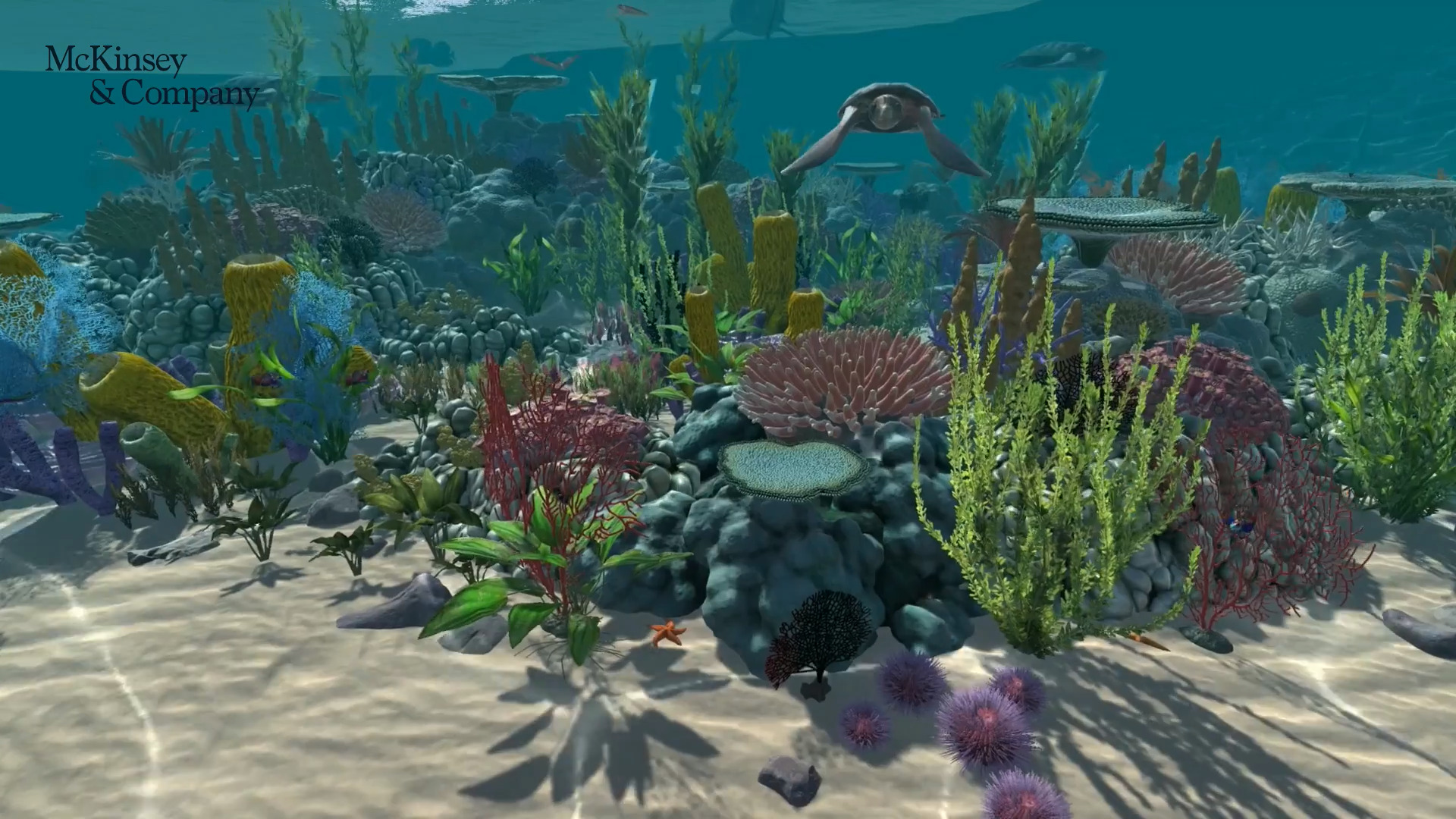
Luckily, we at MCC have been interviewing test takers both before and after the Redrock Case rollout and following up to see which strategies and approaches actually work to push individuals through to interview.
Here, we’ll explain that it is indeed possible to prepare effectively for both versions of Solve and give you some ideas for how you can get started. Understanding how the Solve assessment works, what it tests you for and how is critical for all but the most hurried preparations.
This article makes for a great introduction to the Solve assessment.
However, if you are going to be facing this aptitude test yourself and want
full information and advice for preparation, then you should ideally get
our full PDF guide:
What is the McKinsey Solve assessment?

In simple terms, the McKinsey Solve assessment is a set of ecology-themed video games. In these games, you must do things like build food chains, protect endangered species, manage predator and prey populations and potentially diagnose diseases within animal populations or identify natural disasters.
Usually, you will be given around 70 minutes to complete two separate games, spending about the same amount of time on each.
Until recently, these games had uniformly been Ecosystem Building and Plant Defence. However, since Spring 2023, McKinsey has been rolling out a new version across certain geographies. This replaces the Plant Defence game with the new Redrock Case Study. Some other games have also been run as tests.
We’ll
run through a little more on all these games below to give you an idea of what
you’ll be up against for both versions and possible new iterations.
In the past, candidates had to show up to a McKinsey office and take what was then the Digital Assessment or PSG on a company computer. However, candidates are now able to take the re-branded Solve assessment at home on their own computers.
Test-takers are allowed to leverage any assistance they like (you aren’t spied on through your webcam as you would be with some other online tests), and it is common to have a calculator or even another computer there to make use of.
Certainly, we strongly advise every candidate to have at least a pen, paper and calculator on their desk when they take the Solve assessment.
Common Question: Is the Solve assessment the same thing as the PSG?
In short, yes - “Solve” is just the newer name for the McKinsey Problem Solving Game.
We want to clear up any potential confusion right at the beginning. You will hear this same screening test called a few different things in different places. The Solve moniker itself is a relatively recent re-branding by McKinsey. Previously, the same test was known as either the Problem Solving Game (usually abbreviated to PSG) or the Digital Assessment. You will also often see that same test referred to as the Imbellus test or game, after the firm that created the first version.
You will still see all these names used across various sites and forums - and even within some older articles and blog posts here on MyConsultingCoach. McKinsey has also been a little inconsistent on what they call their own assessment internally. Candidates can often become confused when trying to do their research, but you can rest assured that all these names refer to the same screening test - though folk might be referring to either the legacy or Redrock versions.
Why does the assessment exist?
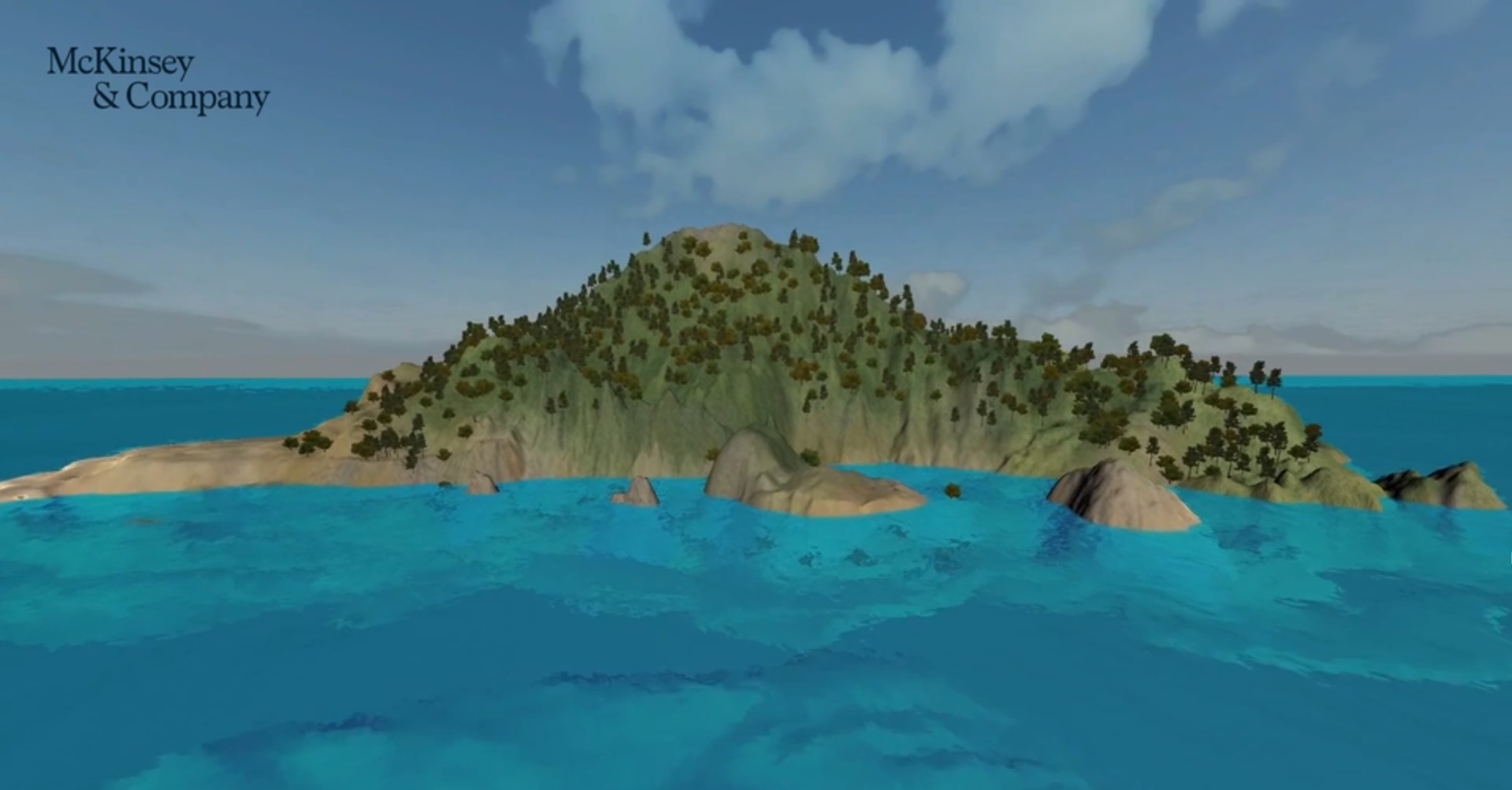
As with Bain, BCG and other major management consulting firms, McKinsey receives far far more applications for each position than they can ever hope to interview. Compounding this issue is that case interviews are expensive and inconvenient for firms like McKinsey to conduct. Having a consultant spend a day interviewing just a few candidates means disrupting a whole engagement and potentially having to fly that consultant back to their home office from wherever their current project was located. This problem is even worse for second-round interviews given by partners.
Thus, McKinsey need to cut down their applicant pool as far as possible, so as to shrink the number of case interviews they need to give without losing the candidates they actually want to hire. Of course, they want to then accomplish this as cheaply and conveniently as possible.
The Problem Solving Test (invariably shortened to PST) had been used by McKinsey for many years. However, it had a number of problems that were becoming more pronounced over time, and it was fundamentally in need of replacement. Some of these were deficiencies with the test itself, though many were more concerned with how the test fitted with the changing nature of the consulting industry.
The Solve assessment has been developed and iterated by the specialist firm Imbellus (now owned by gaming giant Roblox) to replace the long-standing PST in this screening role and offers solutions to those problems with its predecessor.
We could easily write a whole article on what McKinsey aimed to gain from the change, but the following few points cover most of the main ideas:
- New Challenges: In particular, the changing demands of the consulting industry mean that McKinsey is increasingly seeking a new kind of hire. Previously, candidates were largely coming out of MBAs or similar business-focussed backgrounds, and so the PST’s quickfire business questions in a familiar GMAT-style format were perfectly sufficient to select consultants for what were fairly non-technical generalist consulting roles. However, clients have been bringing ever more technical projects to firms like McKinsey. This has led to the increasing internal segmentation of consulting firms - to create specialist digital divisions, for example. Even in generalist consulting, there is also now an increasing recognition of the utility of individuals with real depth of knowledge coming out of either industry or non-business academic routes like PhD programmes (you can read more about getting into consulting without an MBA here). This feeds through to change what constitutes a good aptitude test for McKinsey. Without the once-crucial MBA, McKinsey can’t assume the same kind of detailed business knowledge. They also ideally want a single test that can be given to all kinds of prospective specialist consultants as well as generalists.
- Fairness and the Modern Context: The covid pandemic necessitated at-home aptitude testing. However, even before that, there were pressures for a move to a largely remote recruitment process. Online testing - versus real-life papers, sat on location - dramatically reduces the amount of travel required of candidates. This allows McKinsey to cast a wider net, providing more opportunities to those living away from hub cities, whilst also hugely reducing the carbon footprint associated with the McKinsey selection process.
- Gaming the System: More pragmatically, the Solve assessment promises to simply do the job of selecting the right candidates better than the PST. All things being equal, just increasing the candidate pool with an online test should lead to better quality candidates emerging to top the cohort. However, the Solve assessment also promises to do a better job at ranking those candidates in line with their actual abilities. A large part of this is that it is a much harder test to “game” than the PST was, where highly effective prep resources were available and readily allowed a bad candidate with good preparation to do better than a good candidate. The fact that game parameters change for every individual test-taker also cuts down the risk of some candidates having an unfair advantage by receiving details of the tests being used from those who have already taken them. The recent move towards the Redrock version also helps McKinsey stay ahead of those developing prep resources for the legacy Solve assessment.
- Cost Cutting: A major advantage of scrapping the old pen-and-paper PST is that the formidable task of thinning down McKinsey’s applicant pool can be largely automated. No test rooms and invigilation staff need to be organised and no human effort is required to devise, transport, catalogue and mark papers. This is especially impactful when we consider that the Solve assessment’s advanced “process scoring” function allows the kind of nuanced filtering of candidates that would usually require something like an essay-based exam to accomplish, rather than the multiple-choice PST. Imbellus has provided this without the huge time and effort from expert human markers that would usually be required - so McKinsey has gained ability whilst eliminating cost and inconvenience.
How is the Solve Assessment used by McKinsey?
McKinsey's own account of how the Solve assessment is used in selection can be seen in the following video:
Whilst some offices initially stuck with the old PST, the legacy Solve assessment was soon rolled out globally and is given universally to candidates for roles at pretty well every level of the hierarchy. Certainly, if you are a recent grad from a Bachelor’s, MBA, PhD or similar, or a standard experienced hired, you can expect to be asked to complete the Solve assessment.
Likewise, we can expect the new Redrock Case Study version to be rolled out globally - though at this point it seems you might be given either (especially as McKinsey has been having significant technical problems with this new online case study) and so should be ready for both.
At present, it seems that only those applying for very senior positions or perhaps those with particularly strong referrals and/or connections are allowed to skip the test. Even this will be office-dependent.
As noted above, one of the advantages of the Solve assessment is that it can be given to all of McKinsey’s hires. Thus, you can expect to be run into the same games whether you are applying as a generalist consultant or to a specialist consulting role - with McKinsey Digital, for example.
The takeaway here is that, if you are applying to McKinsey for any kind of consulting role, you should be fully prepared to sit the Solve Assessment!
Where does the Solve assessment fit into the recruitment process?
You can expect to receive an invitation to take the Solve assessment shortly after submitting your resume.

It seems that an initial screen of resumes is made, but that most individuals who apply are invited to take the Solve assessment.
Any initial screen is not used to make a significant cut of the candidate pool, but likely serves mostly to weed out fraudulent applications from fake individuals (such as those wishing to access the Solve assessment more than once so they practice...) and perhaps to eliminate a few individuals who are clearly far from having the required academic or professional background or have made a total mess of their resumes.
Your email invitation will generally give you either one or two weeks to complete the test, though our clients have seen some variation here - with one individual being given as little as three days.
Certainly, you should plan to be ready to sit the Solve assessment within one week of submitting your resume!
Once you have completed the test, McKinsey explain on their site that they look at both your test scores and resume (in more detail this time) to determine who will be invited to in-person case interviews. This will only be around 30% of the candidates who applied - possibly even less.
One thing to note here is that you shouldn’t expect a good resume to make up for bad test scores and vice versa. We have spoken to excellent candidates whose academic and professional achievements were not enough to make up for poor Solve performance. Similarly, we don’t know of anyone invited to interview who hadn’t put together an excellent resume.
Blunty, you need great Solve scores and a great resume to be advanced to interview.
Your first port of call to craft the best possible resume to land your invitation to interview is our excellent free consulting resume guide.
What does the Solve assessment test for?
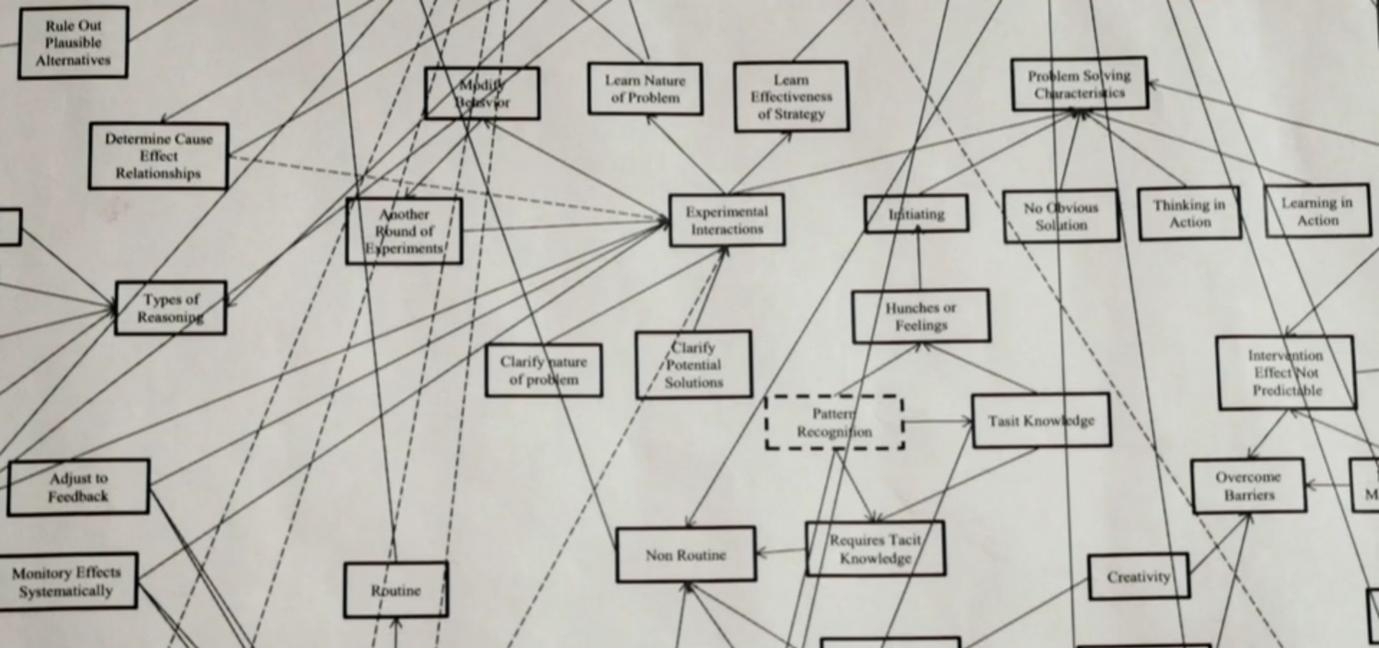
Whilst information on the Solve assessment can be hard to come by, Imbellus and McKinsey have at least been explicit on what traits the test was designed to look for. These are:
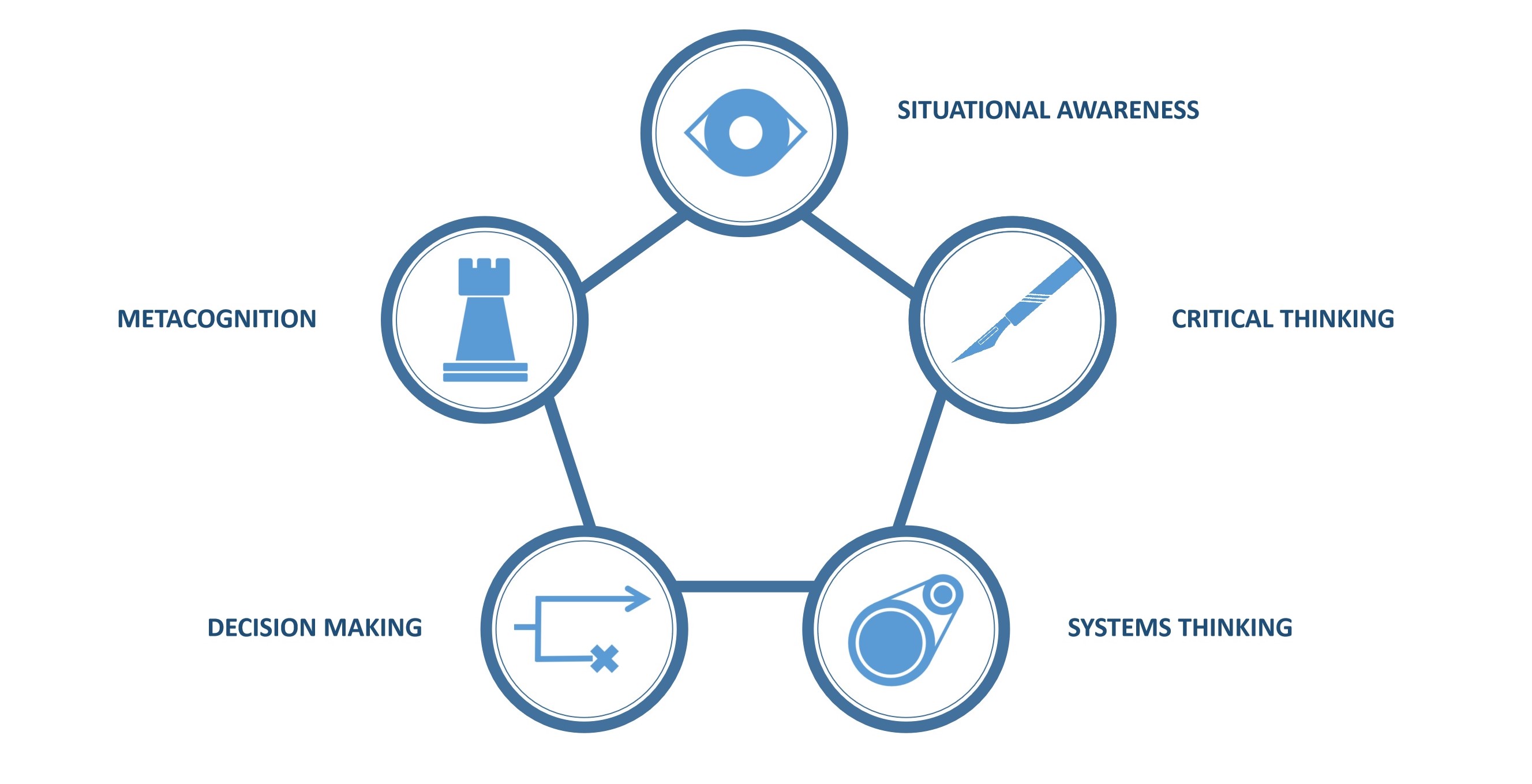
- Critical Thinking: making judgements based on the objective analysis of information
- Decision Making: choosing the best course of action, especially under time pressure or with incomplete information
- Metacognition: deploying appropriate strategies to tackle problems efficiently
- Situational Awareness: the ability to interpret and subsequently predict an environment
- Systems Thinking: understanding the complex causal relationships between the elements of a system
Equally important to understanding the raw fact of the particular skillset being sought out, though, is understanding the very idiosyncratic ways in which the Solve assessment tests for these traits. Let's dive deeper:
Process Scores
Perhaps the key difference between the Solve assessment and any other test you’ve taken before is Imbellus’s innovation around “process scores”.
To explain, when you work through each of the games, the software examines the solutions you generate to the various problems you are faced with. How well you do here is measured by your “product score”.
However, scoring does not end there. Rather, Imbellus’s software also constantly monitors and assesses the method you used to arrive at that solution. The quality of the method you used is then captured in your “process score”.
To make things more concrete here, if you are playing the Ecosystem Building game, you will not only be judged on whether the ecosystem you put together is self-sustaining. You will also be judged on the way you have worked in figuring out that ecosystem - presumably, on how efficient and organised you were. The program tracks all your mouse clicks and other actions and will thus be able to capture things like how you navigate around the various groups of species, how you place the different options you select, whether you change your mind before you submit the solution and so on.
You can find more detail on these advanced aspects of the Solve assessment and the innovative work behind it in the presentation by Imbellus founder Rebecca Kantar in the first section of the following video:
Compared to other tests, this is far more like the level of assessment you face from an essay-based exam, where the full progression of your argument towards a conclusion is marked - or a maths exam, where you are scored on your working as well as the final answer (with, of course, the major advantage that there is no highly qualified person required to mark papers).
Clearly, the upshot of all this is that you will want to be very careful how you approach the Solve assessment so you generally think before you act and show yourself in a very rational, rigorous, ordered light.
We have some advice for how to help look after your process score in our PDF Guide to the McKinsey Solve Assessment.
A Different Test for Every Candidate
Another remarkable and seriously innovative aspect of the Solve assessment is that no two candidates receive exactly the same test.
Imbellus automatically varies the parameters of the different games to be different for each individual test-taker so that each will be given a meaningfully different game to everyone else’s.
Within a game, this might mean a different terrain setting, having a different number of species or different types of species to work with or more or fewer restrictions on which species will eat which others.
Consequently, even if your buddy takes the assessment for the same level role at the same office just the day before you do, whatever specific strategy they used in their games might very well not work for you.
This is an intentional feature designed to prevent test takers from sharing information with one another and thus advantaging some over others. At the extreme, this feature would also be a robust obstacle to any kind of serious cheating.
If cheating seems far-fetched to some readers, remember how competitive the race to land jobs at top consulting firms is. We at MCC have previously been made aware of individuals purporting to sell the answers to consulting screening tests on the black market. If cheating is possible, there is always a risk it can happen.
To manage to give every candidate a different test and still be able to generate a reliable ranking of those candidates across a fundamental skillset, without that test being very lengthy, is a considerable achievement from Imbellus. At high level, this would seem to be approximately equivalent to reliably extracting a faint signal from a very noisy background on the first attempt almost every time.
Taking this level of trouble - and presumed additional expense - shows how seriously McKinsey take the task of ensuring reliable, fair selection by trying to eliminate anything like cheating, or even just normal information flow between candidates, that might have happened with something like the PST.
(Note that we are yet to confirm this also happens with the new Redrock Case Study, but it seems to be set up to allow for easy changes to be made to the numerical values describing the case, so we assume there will be the same kind of variation.)
What does it all mean for you?
Understanding what you are being tested for is obviously crucial in preparing yourself for any kind of assessment. For the Solve assessment, this is especially true the longer the time you have to prepare.
Over longer preps, an understanding of exactly the kind of traits being examined allows you to select skill-building activities that should actually show transference in boosting your test performance.
Of course, this begs the obvious question…
Can I Prepare for the McKinsey Solve Assessment?

In short, yes you can - and you should!
As noted previously, there has previously been a lot of disagreement over whether it is really possible to prep for the Solve assessment in a way that actually makes a difference.
Especially regarding the legacy version, there has been a widespread idea that the Solve assessment functions as something like an IQ test, so that preparation beyond very basic familiarisation to ensure you don’t panic on test day will not do anything to reliably boost your scores (nobody is going to build up to scoring an IQ of 200 just by doing practice tests, for example).
This rationale says that the best you can do is familiarise yourself with what you are up against to calm your nerves and avoid misunderstanding instructions on test day. However, this school of thought says there will be minimal benefit from practice and/or skill building.
The utility of preparation has become a little clearer with the addition of the Redrock Case Study to the new version of Solve. Its heavily quantitative nature, strong time pressure and structure closely resembling a traditional business case make for a clearer route to improvement.
However, as we explain in more detail in our PDF guide to the Solve assessment the idea that any aspect of either version of Solve can't be prepared for has been based on some fundamental misunderstandings about what kind of cognitive traits are being tested. Briefly put, the five key skills the Solve assessment explicitly examines are what are known as higher-order thinking skills.
Crucially, these are abilities that can be meaningfully built over time.
McKinsey and Imbellus have generally advised that you shouldn’t prepare. However, this is not the same as saying that there is no benefit in doing so. McKinsey benefits from ensuring as even a playing field as possible. To have the Solve test rank candidates based purely on their pre-existing ability, they would ideally wish for a completely unprepared population.
The Games

There has been a bit of variation in the games included in the Solve
assessment/PSG over the years and what specific form those games take.
Imbellus and McKinsey have experimented with whole new configurations as
well as making smaller, iterative tweaks over time. That being said, the new 2023 Redrock case is by far the largest change to Solve since that assessment's genesis back in 2017.
Given that innovation seems to continue (especially with the lengthy feedback forms some candidates are being asked to sit after sitting the newest iteration), there is always the chance you might be the first to receive something new.
However, our surveys of, and interviews with, those taking the Solve assessment - both before and after recent changes - mean we can give you a good idea of what to expect if you are presented with either the legacy or the Redrock version of Solve.
We provide much more detailed explanation of each of the games in our Solve Assessment PDF Guide - including guidance on optimal scenarios to maximise your performance. Here, though, we can give a quick overview of each scenario:
Ecosystem Building
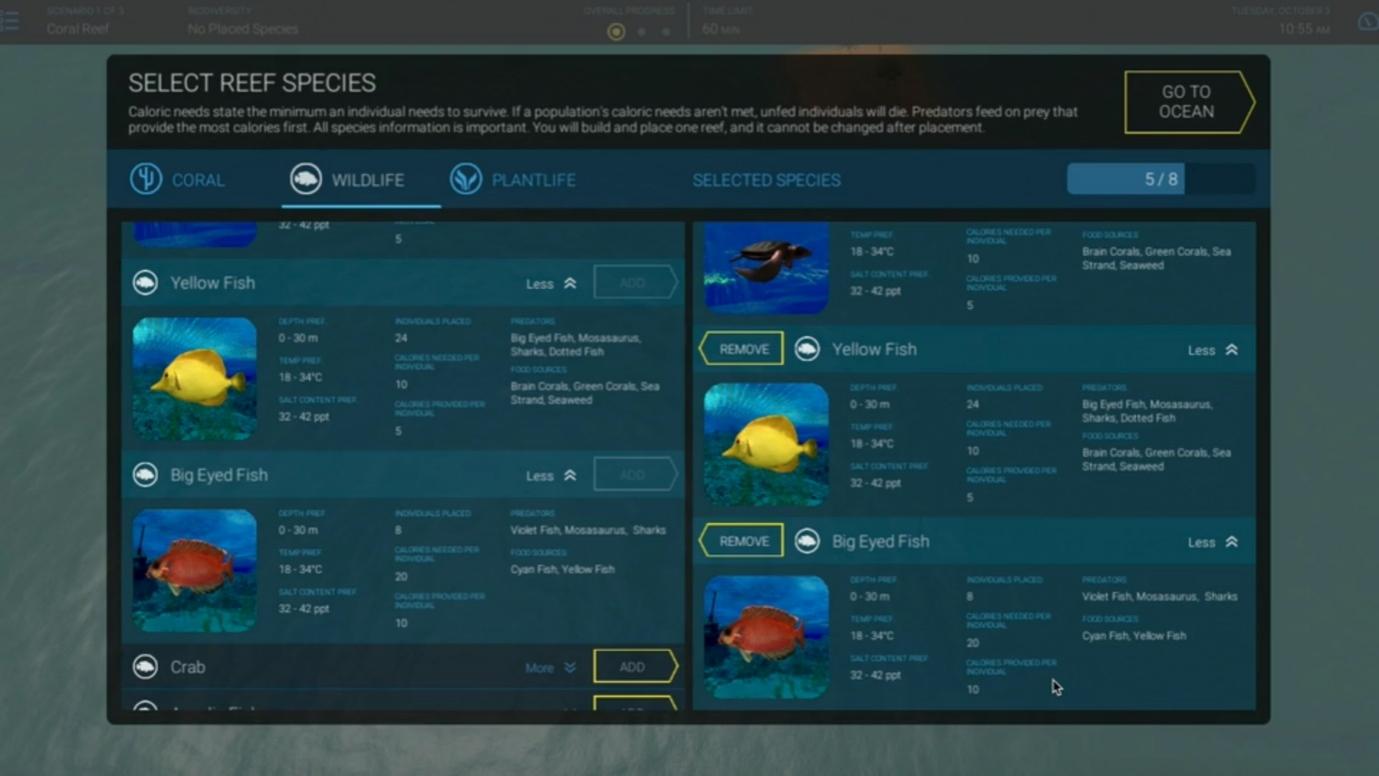
In this scenario, you are asked to assemble a self-sustaining ecosystem in either an aquatic, alpine or jungle environment (though do not be surprised if environments are added, as this should be relatively easy to do without changing the underlying mechanics).
The game requires you to select a location for your ecosystem. Several different options are given, all with different prevailing conditions. You then have to select a number of different plant and animal species to populate a functioning food chain within that location.
In previous versions of the game, you would have had to fit as many different species as possible into a functioning food chain. However, recent iterations of the Solve assessment require a fixed number of eight species to be selected.
Species selection isn’t a free-for-all. You must ensure that all the species you select are compatible with one another - that the predator species you select are able to eat the prey you have selected for them etc. All the species must also be able to survive in the conditions prevailing at the location you have selected.
So far, this sounds pretty easy. However, the complexity arises from the strict rules around the manner and order in which the different species eat one another. We run through these in detail in our guide, with tips for getting your food chain right. However, the upshot is that you are going to have to spend some significant time checking your initial food chain - and then likely iterating it and replacing one or more species when it turns out that the food chain does not adhere to the eating rules.
Once you have decided on your food chain, you simply submit it and are moved on to the next game. In the past, test takers were apparently shown whether their solution was correct or not, but this is no longer the case.
Test-takers generally report that this game is the easier of the two, whether it is paired with the Plant Defence game in the legacy Solve or the Redrock Case Study in the new version. Candidates will not usually struggle to assemble a functioning ecosystem and do not find themselves under enormous time pressure. Thus, we can assume that process scores will be the main differentiator between individuals for this component of the Solve assessment.
For ideas on how to optimise your process score for this game, you can see our PDF Solve guide.
Plant Defence
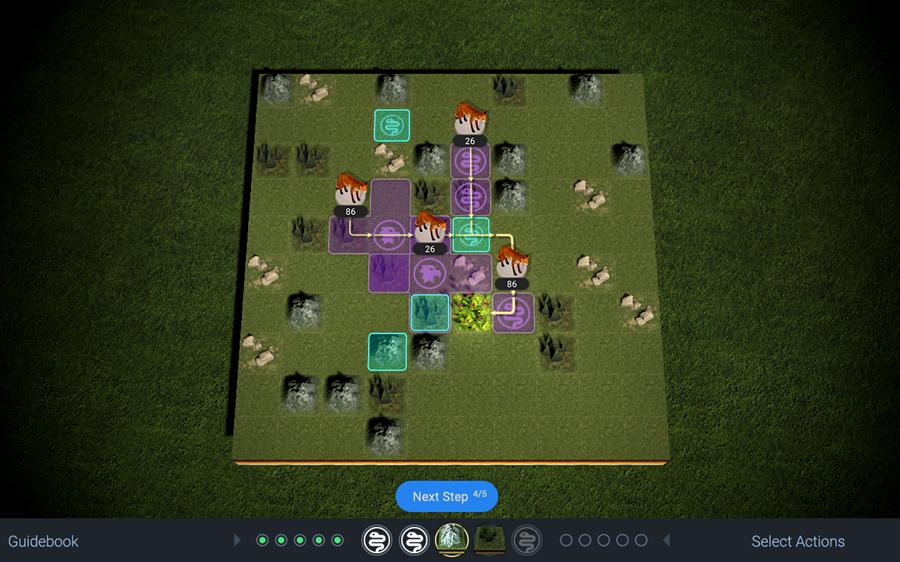
As mentioned, this game has been replaced with the Redrock Case Study in the new newer iteration of the Solve assessment, rolled out from Spring 2023. However you might still be asked to sit the legacy version, with this game, when applying to certain offices - so you should be ready for it!
This scenario tasks you with protecting an endangered plant species from invasive species trying to destroy it.
The game set-up is much like a traditional board game, with play taking place over a square area of terrain divided into a grid of the order of 10x10 squares.
Your plant is located in a square near the middle of the grid and groups of invaders - shown as rats, foxes or similar - enter from the edges of the grid before making a beeline towards your plant.
Your job then is to eliminate the invaders before they get to your plant. You do this by placing defences along their path. These can be terrain features, such as mountains or forests, that either force the invaders to slow down their advance or change their path to move around an obstacle. To actually destroy the invaders though, you use animal defenders, like snakes or eagles, that are able to deplete the groups of invaders as they pass by their area of influence.
Complication here comes from a few features of the game. In particular:
- You are restricted in terms of both the numbers of different kinds of defenders you can use and where you are allowed to place them. Thus, you might only have a couple of mountains to place and only be allowed to place these in squares adjacent to existing mountains.
- The main complication is the fact that gameplay is not dynamic but rather proceeds in quite a restricted turnwise manner. By this, we mean that you cannot place or move around your defences continuously as the invaders advance inwards. Rather, turns alternate between you and invaders and you are expected to plan your use of defences in blocks of five turns at once, with only minimal allowance for you to make changes on the fly as the game develops.
The plant defence game is split into three mini-games. Each mini-game is further split into three blocks of five turns. On the final turn, the game does not stop, but continues to run, with the invaders in effect taking more and more turns whilst you are not able to place any more defences or change anything about your set-up.
More and more groups of invaders pour in, and your plant will eventually be destroyed. The test with this “endgame” is simply how many turns your defences can stand up to the surge of invaders before they are overwhelmed.
As opposed to the Ecosystem Building scenario, there are stark differences in immediate candidate performance - and thus product score - in this game. Some test takers’ defences will barely make it to the end of the standard 15 turns, whilst others will survive 50+ turns of endgame before they are overwhelmed.
In this context, as opposed to the Ecosystem Building game typically preceding it, it seems likely that product score will be the primary differentiator between candidates.
We have a full discussion of strategies to optimise your defence placement - and thus boost your product score - in our Solve guide.
Redrock Case Study

This is the replacement for the Plant Defence game in the newest iteration of Solve.
One important point to note is that, where the Solve assessment contains this case study, you have a strict, separate time limit of 35 minutes for each half of the assessment. You cannot finish one game early and use the extra time in the other, as you could in the legacy Solve assessment.
McKinsey has had significant issues with this case study, with test takers noting several major problems. In particular:
- Glitches/crashes - Many test takers have had the Redrock Case crash on them. Usually, this is just momentary and the assessment returns to where it was in a second or two. If this happens to you, try to just keep calm and carry on. However, there are reports online of some candidates having the whole Solve assessment crash and being locked out as a result. If this happens, you should contact HR.
- Confusing interface - Candidates have routinely noted that Redrock's controls are confusing and seem poorly designed compared to the older Ecosystem Building game preceding it. This means that they can often lose time figuring out how to interact with the case.
- Confusing language - Related to the above is that the English used is often rather convoluted and sometimes poorly phrased. This can be challenging even for native English speakers but is even worse for those sitting Solve in their second language. It can make the initial instructions difficult to understand - compounding the previous interface problem. It can also make questions difficult, requiring a few readings to comprehend.
- Insufficient time - Clearly, McKinsey intended for Redrock to be time pressured. However, time is so scarce that pretty well nobody is getting through all the questions. This is plainly sub-optimal for McKinsey - as well as being stressful and disheartening for candidates. We would expect changes to be made to address this issue in future.
McKinsey are clearly aware of these issues, as they have been asking some test takers to complete substantial feedback surveys after sitting Redrock. Be aware, then, that this raises the likelihood of changes to the Redrock Case Study in the near term - meaning you should be ready to tackle something new.
For the time being, though, we can take you through the fundamentals of the current version of the Redrock Case Study. For more detail, see our freshly updated PDF Guide.
The Scenario
Whilst changes to the details are likely in future, the current Redrock Case Study is set on the Island of Redrock. This island is a nature reserve with populations of several species, including wolves and elk. Redrock's wolves are split into four packs, associated with four geographical locales. These packs predate the elk and depend upon them for food, such that there is a dynamic relationship between the population numbers of both species. Your job is to ensure ecological balance by optimising the numbers of wolves in the four packs, such that both wolves and elk can sustainably coexist.
The Questions
The Redrock case study's questions were initially split into three sections, but a fourth was later added. These sections break down as follows:
- Investigation - Here, you have access to the full description of the case, with all the data on the various animal populations. Your task is to efficiently extract all the most salient data points and drag-and-drop them to your "Research Journal" workspace area. This is important, as you subsequently lose access to all the information you don't save at this stage.
- Analysis - You must answer three numerical questions using information you saved in the Investigation section. This can include you dragging and dropping values to and from an in-game calculator.
- Report - Formerly the final section, you must complete a pre-written report on the wolf populations, including calculating numerical values to fill in gaps and using an in-game interface to make a chart to illustrate your findings. You will leverage information saved in the Investigation section, as well as answers calculated in the Analysis section.
- Case Questions - This section adds a further ten individual case questions. These are thematically similar to the preceding case, but are otherwise separate, not relying on any information from the previous sections. The ten questions are highly quantitative and extremely time pressured. Pretty well nobody finishes them before being timed out.
This is a very brief summary - more detail is available in our PDF Guide.
Other Games - Disease and Disaster Identification
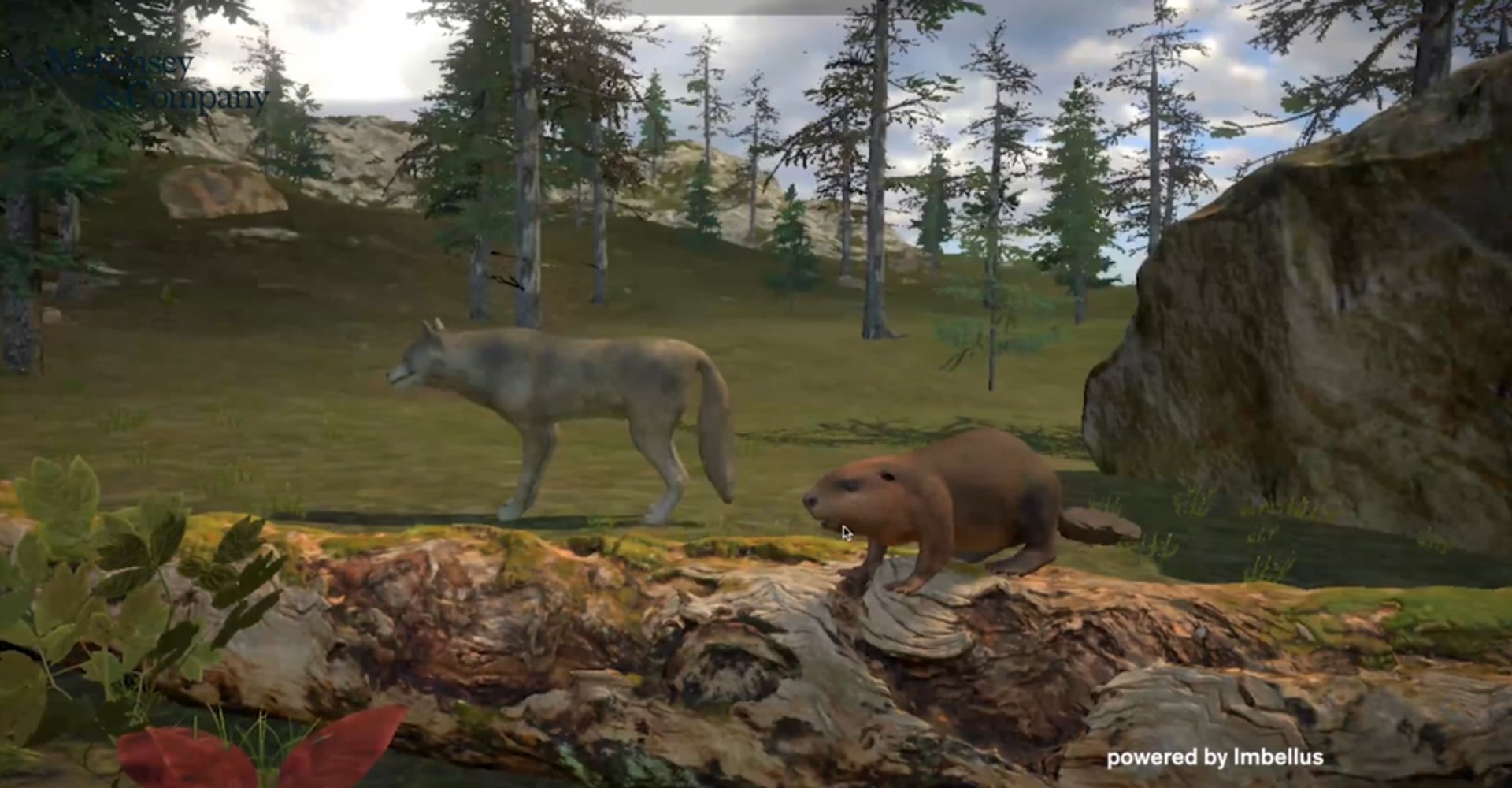
There have been accounts of some test-takers being given a third game as part of their Solve assessment. At time of writing, these third games have always been clearly introduced as non-scored beta tests for Imbellus to try out potential new additions to the assessment. However, the fact that these have been tested means that there is presumably a good chance we’ll see them as scored additions in future.
Notably, these alternative scenarios are generally variations on a fairly consistent theme and tend to share a good deal of the character of the Ecosystem Building game. Usually, candidates will be given a whole slew of information on how an animal population has changed over time. They will then have to wade through that information to figure out either which kind of natural disaster or which disease has been damaging that population - the commonality with the Ecosystem Building game being in the challenge of dealing with large volumes of information and figuring out which small fraction of it is actually relevant.
Join thousands of other candidates cracking cases like pros
At MyConsultingCoach we teach you how to solve cases like a consultant Get startedHow to effectively prep for the Solve assessment

We discuss how to prep for the Solve assessment in full detail in our PDF guide. Here though, we can give you a few initial pointers to get you
started. In particular, there are some great ways to simulate different games as well as build up the skills the Solve assessment tests for.
Gaming
Playing video games is great prep for the legacy Solve assessment in particular, but remains highly relevant to the new Redrock version.
Contrary to what McKinsey and Imbellus have said - and pretty unfortunately for those of us with other hobbies - test-takers have consistently told us that they reckoned the Problem Solving Game and now the Solve assessment pretty robustly favours those with strong video gaming experience.
If you listened when your parents told you video games were a waste of time and really don’t have any experience, then putting in some hours on pretty much anything will be useful. However, the closer the games you play are to the Solve scenarios, the better. We give some great recommendations on specific games and what to look for more generally in our Solve guide - including one free-to-play game that our clients have found hugely useful as prep for the plant defence game!
PST-Style Questions
The inclusion of the Redrock case studies in the new version of Solve really represents a return to something like a modernised PST. Along with the similar new BCG Casey assessment, this seems to be the direction of travel for consulting recruitment in general.
Luckily, this means that you can leverage the wealth of existing PST-style resources to your advantage in preparation.
Our PST article - which links to some free PST questions and our full PST prep resources - is a great place to start. However, better than old-fashioned PDF question sets are the digital PST-style questions embedded in our Case Academy course. Conducted online with a strict timer running, these are a much closer approximation of the Solve assessment itself. These questions are indeed a subset of our Case Academy course, but are also available separately in our Course Exercises package.
Quick Mathematics With a Calculator
Again, specifically for the Redrock assessment, you will be expected to solve math problems very quickly. The conceptual level of mathematics required is not particularly high, but you need to know what you are doing and get through it fast using a calculator (and/or Excel, if you are already comfortable with that program).
Our article on consulting math is a great place to start to understand what is expected of you throughout the recruiting process, with our consulting math package (a subset of our Case Academy course) providing more in-depth lessons and practice material.
Learn to Solve Case Studies
With the Redrock Case Study clearly being an ecology-themed analogue to a standard business case study, it's pretty obvious that getting good at case studies will be useful.
However, the Solve assessment as a whole is developed and calibrated to be predictive of case interview performance, so you can expect that improving your case solving ability will indirectly bring up your performance across the board.
Of course, this overlaps with your prep for McKinsey's case interviews. For more on how to get started there, see the final section of this article.
Learning About Optimal Strategies for the Games
The first thing to do is to familiarise yourself with the common game scenarios from the Solve assessment and how you can best approach them to help boost your chances of success.
Now, one thing to understand is that, since the parameters for the games change for each test-taker, there might not be a single definitive optimal strategy for every single possible iteration of a particular game. As such, you shouldn’t rely on just memorising one approach and hoping it matches up to what you get on test day.
Instead, it is far better to understand why a strategy is sensible in some circumstances and when it might be different to do something else instead if the version of the game you personally receive necessitates a different approach.
In this article, we have given you a useful overview of the games currently included in the Solve assessment. However, a full discussion with suggested strategies is provided in our comprehensive Solve guide.
With the limited space available here, this is only a very brief sketch of a subset of the ways you can prep.
As noted, what will help with all of these and more is reading the very extensive prep guidance in our full PDF guide to the Solve assessment...
MCC Solve Assessment PDF Guide
Preparing for the Solve assessment doesn’t have to be a matter of stumbling
around on your own. Whilst prep isn’t quite as straightforward as it would be for a more conventional test, there is still a lot you can do to increase your chances.
This article is a good start to get you up to speed. From here, though our new, updated PDF guide to the McKinsey Solve assessment is your first stop to optimise your Solve preparation.
This guide is based on our own survey work and interviews with real
test-takers, as well as follow-ups on how the advice in the previous guide
worked out in reality.
The MyConsultingCoach Solve guide is designed to be no-nonsense and straight to the point. It tells you what you need to know up front and - for those of you who have already received the invitation to interview and don’t have much time - crucial sections are clearly marked to read first, with specific advice for prepping in a hurry
For those of you starting early with more time to spare, there is also a fully detailed, more nuanced discussion of what the test is looking for and how you can design a more long-term prep to build up the skills you need - and how this can fit into your wider case interview prep.
All throughout, there is no fluff to bulk out the page count. The market is awash with guides at huge page counts, with appendices etc stuffed full of irrelevant material to boost overall document length. By contrast, we realise your time is better spent actually preparing than ploughing through a novel.
If this sounds right for you, you can purchase our PDF Solve guide here:
The Next Step - Case Interviews

So, you pour in the hours to generate an amazing resume and cover letter.
You prepare diligently for the Solve assessment. You go through our PDF guide, implementing all the suggestions. Accordingly, you pour more hours
into gaming, skill building and practising with PST-style questions.
You feel great on the day itself and ace the test, building a perfect ecosystem and keeping your plant alive for 50+ turns or acing the calculations for the Redrock questions.
Your product and process scores are right at the top of your cohort and those plus your resume and cover letter are enough to convince McKinsey to invite you for a first-round case interview. Excellent!
Now the real work begins…
Arduous as application writing and Solve prep might have seemed, preparing for McKinsey case interviews will easily be an order of magnitude more difficult.
McKinsey tells candidates not to prepare for Solve, and it is quite possible that someone might pass that assessment without having done any work in advance. However, McKinsey explicitly expects candidates to have rigorously prepared for case interviews, and it is vanishingly unlikely that an unprepared interviewee could pass even first-round interviews.
The volume of specific business knowledge and case-solving principles, as well as the sheer complexity of the cases you will be given, mean that there is no way around knuckling down, learning what you need to know and practising on repeat.
McKinsey have internal mentoring programmes for promising individuals and we have even heard of HR staff there explicitly telling candidates to secure private coaching before their interviews (indeed, it seems MCC got directly recommended by at least one HR).
All this means that, if you want to get through your interviews and actually land that McKinsey offer, you are going to need to take things seriously, put in the time and learn how to properly solve case studies.
Unfortunately, not all case cracking methods are created equal. There are some older-but-still-well-known systems out there largely trading on brand recognition, but with dubious efficacy - especially in a world where interviewers know all about the frameworks they teach and how to select cases that don’t fit them.
The method we teach throws out generic frameworks altogether and shows you how to solve cases the way a real management consultant approaches a real engagement. Usefully, our method is based specifically on the way McKinsey train incoming consultants
The time you put into learning our approach to case cracking won't just be time down the drain memorising some cribs to be forgotten after the interview. Instead, the methods we teach should still be useful when you start the job itself, giving you a head start on becoming a top-performing consultant!
You can start reading about the MCC method for case cracking here. To step your learning up a notch, you can move on to our Case Academy course.
To put things into practice in some mock interviews with real McKinsey consultants, take a look at our coaching packages.
And, if all this (rightfully) seems pretty daunting and you’d like to have an experienced consultant guide you through your whole prep from start to finish, you can apply for our comprehensive mentoring programme here.
